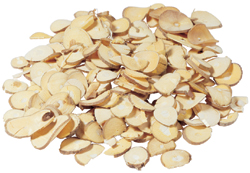inseparable; non-anatomical essence, Qi and spirit, Yin and Yang, viscera and their manifestation, as well as meridians and collaterals construct a functional system in the human body. Human body is a organic entirety; all the physique tissues, sensory organs and orifices can be fitted into the system of viscera and their manifestation, which takes the five zang-organs as the center; and, through the meridians and collaterals, all the human viscera, organs, orifices, skin, muscle and bone are interconnected and constructed in an unified entirety, allowing the fluent operation of Qi, blood and body fluid.
Human viscera and other tissues and organs are mutually linked physiologically, and affected pathologically with each other.
Disease treatment should not take only palliative measures for the illness, such as merely give analgesic for pain and antipyretic for fever, but ought to set the base on recuperating the healthy Qi (disease-resistant capacity and autonomic regulating mechanisms), enhancing the resistance of one’s own to expel pathologic factors, so that to promote the recovery of normal status of the entirety. The principle of Anyu’s prescription is founded on the relationship among “monarch, minister, assistant and guide”, through the mutual interaction to “harmonize the seven aspects (i.e. using a single herb, mutual reinforcement, mutual assistance, inter-restriction, counteraction, mutual inhibition, and incompatibility)”, and, combined with treatment based on syndrome differentiation, to create the unique therapeutic efficacy at the level of organic entirety. |
 |
In addition, Anyu always emphasizes the study on the invisible vital phenomena. Anyu has realized that the exploration on the invisible phenomena such as essence, Qi and spirit is of great importance to understand some mechanisms of human life activity, as well as the analysis and treatment of diseases. |
| Human is a super-creature with spirit and consciousness, not a simply composed organism, but an organic assemblage of physique, Qi and spirit. The so called “physique”, or physical appearance, is the organization of body; “Qi” (healthy Qi) is the motive power of life activity; and “spirit” is the substantive feature of mental life, the reflection of heart function and the exterior expression of life activity. As documented in Huangdi- neijing—Suwen Xuanming Wuqipian, “What stored respectively in five zang-organs are: spirit in heart, corporeal soul in lung, ethereal soul in liver, consciousness in spleen, and aspiration in kidney.” Under the pathological condition, abnormality of heart-spirit itself not only is a kind of pathological change, but also acts as etiological factor and pathological mechanism in the induction of new diseases. But modern medical science neglects the fact that human is a vital organism composed of physique, Qi and spirit as a whole, and does not pay much attention to the interrelationship between illness and immaterial factor. In fact, illness is a portion of human vital phenomena. Those basic vital phenomena, including seven emotions (joy, anger, anxiety, pensiveness, sorrow, fright and terror), character, temperament, desire and spirit, are closely related to various chronic diseases, and some disease may even be directly initiated by these immaterial factors. In 1865, Claude Bernard pointed out clearly (in An Introduction to the Study of Experimental Medicine) that “vital phenomena are not able to be fully explained by physical-chemical principles in the abiotic world.” More than one hundred years later, modern medical science has nowadays encountered many unsolvable difficult problems, demonstrating the correctness of Bernard’s comment. |
|